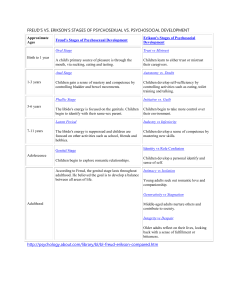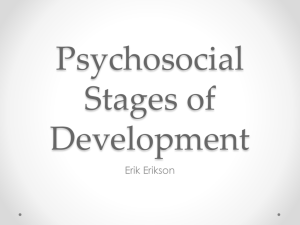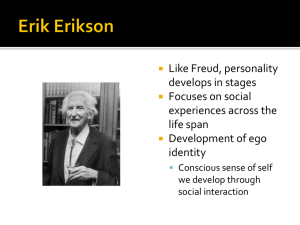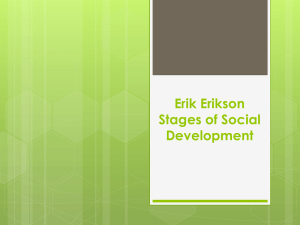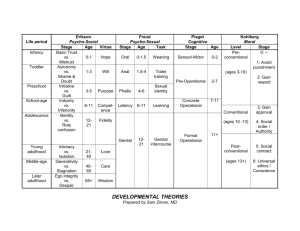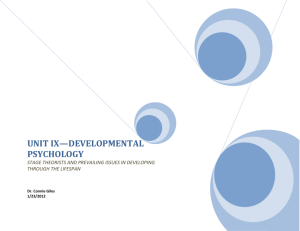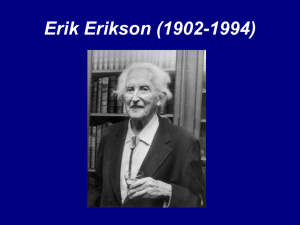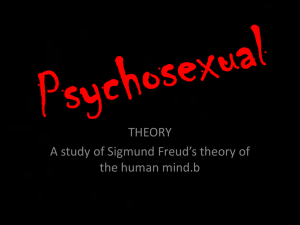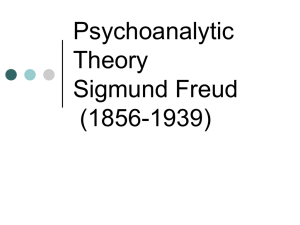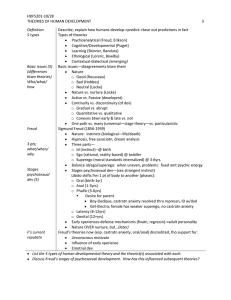Freud vs. Erikson: Stages of Development Comparison
advertisement
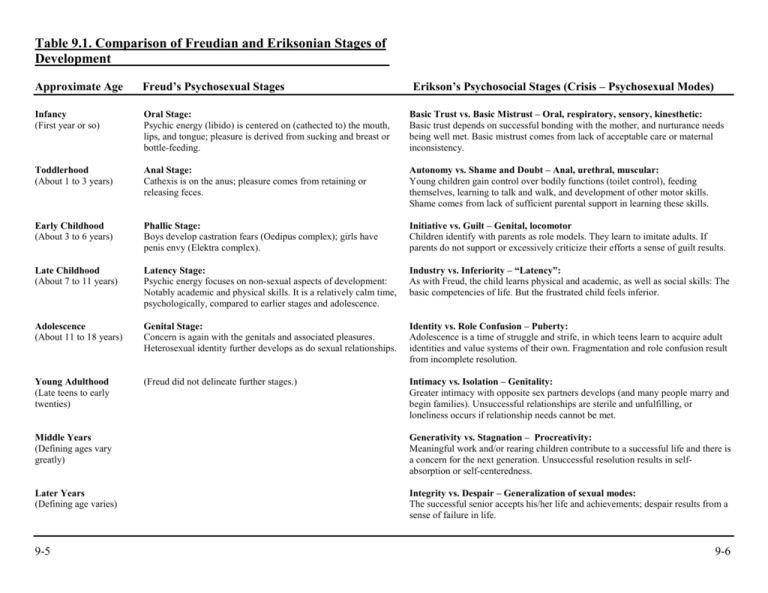
Table 9.1. Comparison of Freudian and Eriksonian Stages of Development_________________________________________ Approximate Age Freud’s Psychosexual Stages Erikson’s Psychosocial Stages (Crisis – Psychosexual Modes) Infancy (First year or so) Oral Stage: Psychic energy (libido) is centered on (cathected to) the mouth, lips, and tongue; pleasure is derived from sucking and breast or bottle-feeding. Basic Trust vs. Basic Mistrust – Oral, respiratory, sensory, kinesthetic: Basic trust depends on successful bonding with the mother, and nurturance needs being well met. Basic mistrust comes from lack of acceptable care or maternal inconsistency. Toddlerhood (About 1 to 3 years) Anal Stage: Cathexis is on the anus; pleasure comes from retaining or releasing feces. Autonomy vs. Shame and Doubt – Anal, urethral, muscular: Young children gain control over bodily functions (toilet control), feeding themselves, learning to talk and walk, and development of other motor skills. Shame comes from lack of sufficient parental support in learning these skills. Early Childhood (About 3 to 6 years) Phallic Stage: Boys develop castration fears (Oedipus complex); girls have penis envy (Elektra complex). Initiative vs. Guilt – Genital, locomotor Children identify with parents as role models. They learn to imitate adults. If parents do not support or excessively criticize their efforts a sense of guilt results. Late Childhood (About 7 to 11 years) Latency Stage: Psychic energy focuses on non-sexual aspects of development: Notably academic and physical skills. It is a relatively calm time, psychologically, compared to earlier stages and adolescence. Industry vs. Inferiority – “Latency”: As with Freud, the child learns physical and academic, as well as social skills: The basic competencies of life. But the frustrated child feels inferior. Adolescence (About 11 to 18 years) Genital Stage: Concern is again with the genitals and associated pleasures. Heterosexual identity further develops as do sexual relationships. Identity vs. Role Confusion – Puberty: Adolescence is a time of struggle and strife, in which teens learn to acquire adult identities and value systems of their own. Fragmentation and role confusion result from incomplete resolution. Young Adulthood (Late teens to early twenties) (Freud did not delineate further stages.) Intimacy vs. Isolation – Genitality: Greater intimacy with opposite sex partners develops (and many people marry and begin families). Unsuccessful relationships are sterile and unfulfilling, or loneliness occurs if relationship needs cannot be met. Middle Years (Defining ages vary greatly) Generativity vs. Stagnation – Procreativity: Meaningful work and/or rearing children contribute to a successful life and there is a concern for the next generation. Unsuccessful resolution results in selfabsorption or self-centeredness. Later Years (Defining age varies) Integrity vs. Despair – Generalization of sexual modes: The successful senior accepts his/her life and achievements; despair results from a sense of failure in life. 9-5 9-6 9-5 9-6
